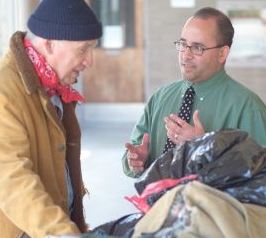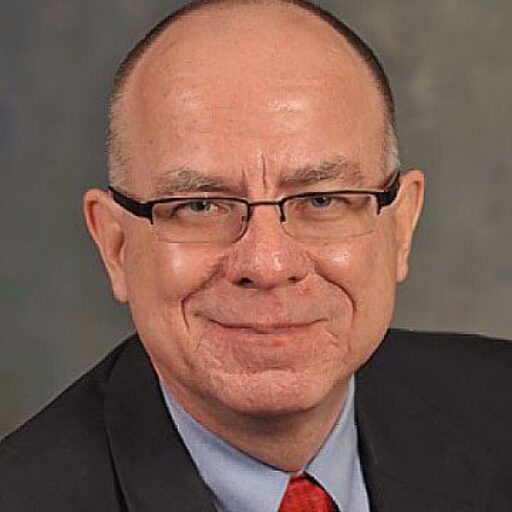 Because they do not receive government and insurance monies, rescue missions that serve the homeless are not bound to strict time limits on the days of service they can render. There is no magic to 30-day, 90-day 120-day programs. These have always been set by the people who provided the dollars.
Because they do not receive government and insurance monies, rescue missions that serve the homeless are not bound to strict time limits on the days of service they can render. There is no magic to 30-day, 90-day 120-day programs. These have always been set by the people who provided the dollars.
That’s why I recommend a program for homeless addicts that is based totally on accomplishing a set of treatment goals — instead of one based on the calendar. Still, there are some special considerations for the first 30 days of sobriety to which we need to pay special attention. If we make a special effort to help a newly recovering people through them, more of them will stay around longer and go forward in recovery. A “pre-program” program has definite advantages.
A. Taking time to assimilate into the program – Most rescue mission workers will tell you that new people walk away from a recovery program within the first few weeks. Some leave because they are not ready to stop using drugs and alcohol — something over which we have little control. On the other hand, jumping directly into an intensive program from a life on the streets can be overwhelming. A 30—day transition period is one way to provide newly sober addicts a chance to build up their health and become oriented to a life without drugs and alcohol. Many rescue missions have instituted month-long “pre-program” programs where time is spent in less intense activities focusing on daily support groups, work therapy and preparing for the next step in the life of recovery.
B. The issue of detoxification — While alcohol and drugs normally pass through the human body in about 72 hours, it takes a full thirty days for the brain to begin functioning normally. Until then, newly sober addicts have problems with logical thinking, short-term memory, and motor coordination. With this in mind, in this first month, detailed reading and writing assignments and job assignments that could be potentially dangerous to such people like work on ladders, handling of potentially hazardous materials, etc. should be avoided.
C. Medical/optical/dental screening — By the time homeless addicts find their way to a rescue mission program, it has usually been a long time since they have had a physical or a dental or optical examination. Every program participant must receive this sort of assistance before beginning the intensive phase of the recovery program. If not properly addressed, health problems will have a negative impact on an individual’s ability to recover from addiction. A new pair of glasses or the right prescription for a medical condition can do a lot in assisting newly sober addicts become fully functioning recovery program participants.
D. Mental health screening — Every recovery program must establish a working relationship with community mental health providers. Some studies estimate that one-third or more of homeless adults suffer from a debilitating mental illness, ranging from depression to schizophrenia. This is especially a person comes in with a bag of pills with prescriptions that have been written by several different physicians.
E. Legal assistance — The majority of people who come to rescue mission recovery programs have had run-ins with the law. They come with outstanding warrants, court dates, child support and marital issues and so on If they are going to be able to concentrate on the program and a commitment to spiritual growth, we need to be sure they don’t have theses sorts of issues hanging over their heads.
F. Daily support groups — While their brain functions are returning to normal, support groups are more effective than direct counseling. For the pre-program, mandatory daily attendance at addiction recovery support groups is essential, along with chapel attendance and one-on-one case management sessions is way to help the new person remember not to drink or use drugs. Hearing the stories of those who a living a sober and successful life provide hope, plus it helps them to feel a part of the recovery community.
G. A chance to show they are serious — Most rescue mission recovery programs have no trouble filling up their beds. Still, it is better to have a smaller program with committed participants than a large one with people who are not serious about changing their lives. For this reason, setting aside a special part of the building dedicated to the pre-program makes sense. A 30-day trail period provides prospective program members a means by which they can demonstrate their commitment to recovery. If that desire is truly there, they will go on to enter a program with others who are just as serious are they are
For downloadable forms and other helpful information for creating recovery plans, see the Guide to Effective Rescue Mission Recovery Programs.
For the rest of this series go to the Organizing the Counseling Process Index

 In this installment, I would explore a very basic question; “Just what can we expect to accomplish in the life of a homeless addict during their stay at a rescue mission program?” The answer comes from recognizing some basic needs that need to be addressed so those we work can develop productive, satisfying sober lives.
In this installment, I would explore a very basic question; “Just what can we expect to accomplish in the life of a homeless addict during their stay at a rescue mission program?” The answer comes from recognizing some basic needs that need to be addressed so those we work can develop productive, satisfying sober lives. In the past thirty years of my work, I have had the opportunity to visit many facilities that help the homeless. When I see a man in a recovery program I like to ask, “How is he doing?” I usually just get a pat answer like, “Well, he’s been with us for six months.” The problem with this answer, of course is that a sober, healthy lifestyle is not automatically picked up just by hanging around the mission for a certain length of time.
In the past thirty years of my work, I have had the opportunity to visit many facilities that help the homeless. When I see a man in a recovery program I like to ask, “How is he doing?” I usually just get a pat answer like, “Well, he’s been with us for six months.” The problem with this answer, of course is that a sober, healthy lifestyle is not automatically picked up just by hanging around the mission for a certain length of time.

